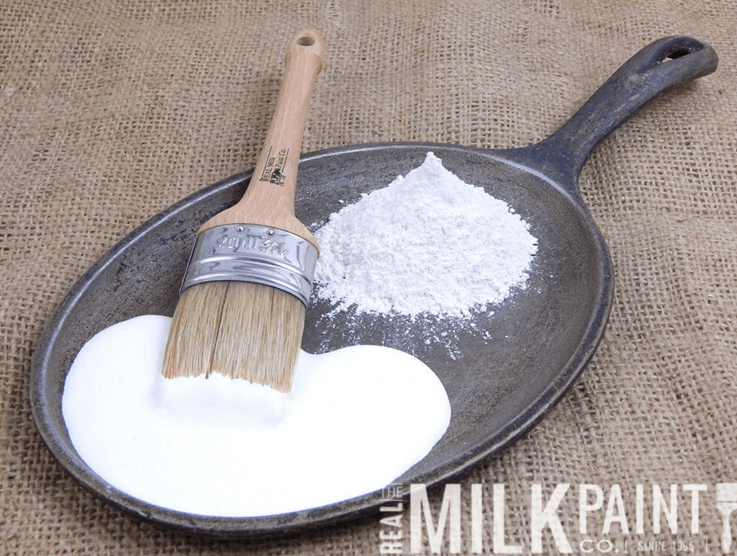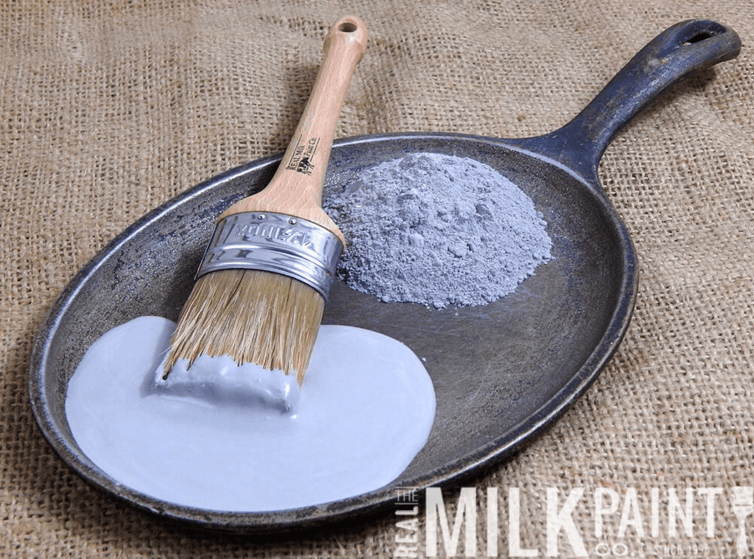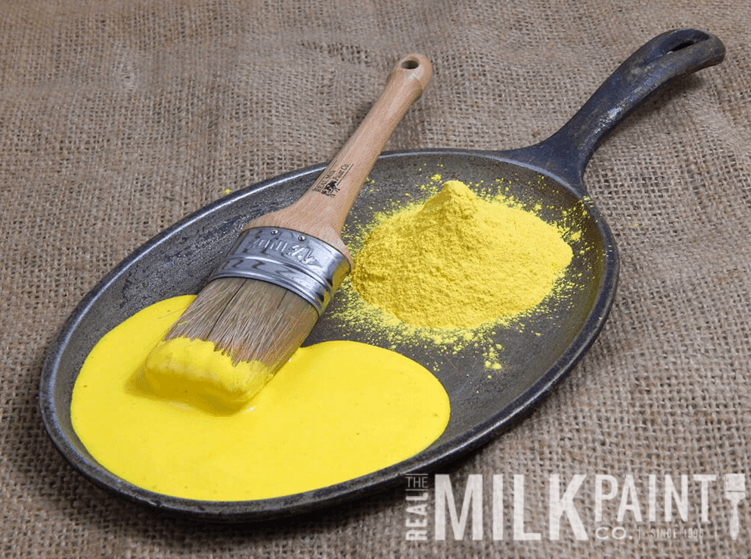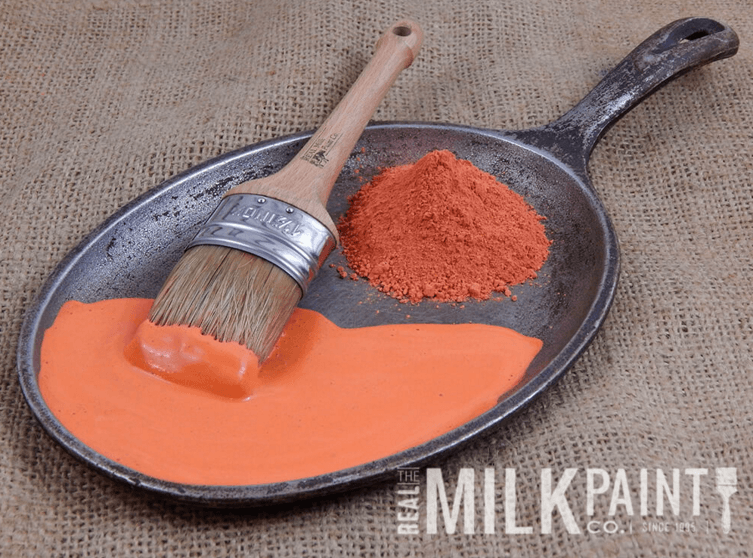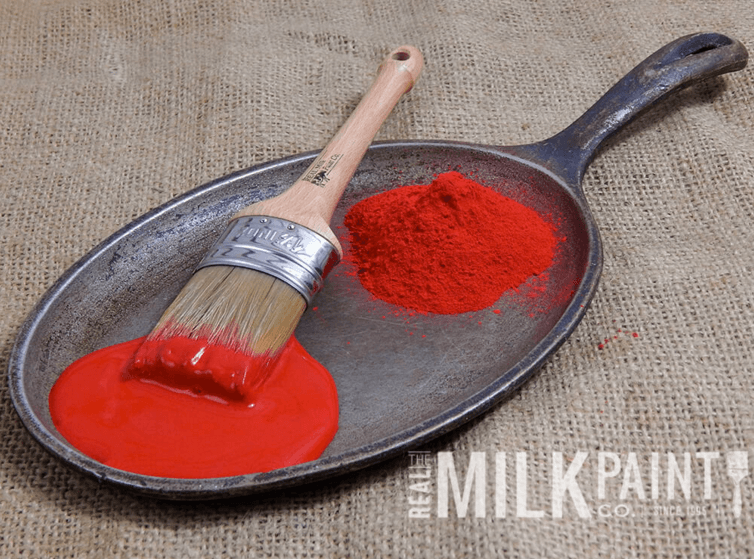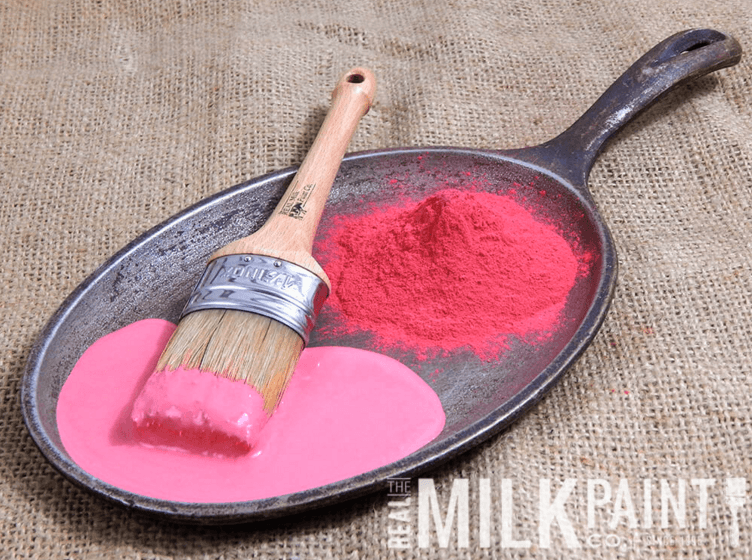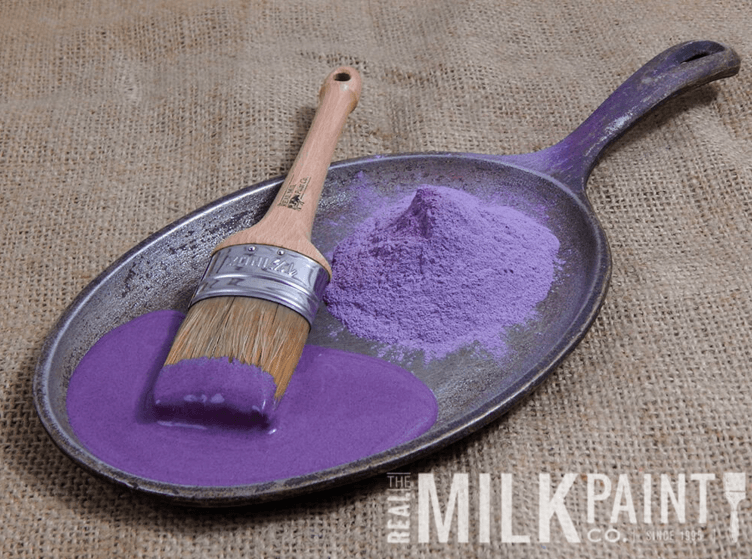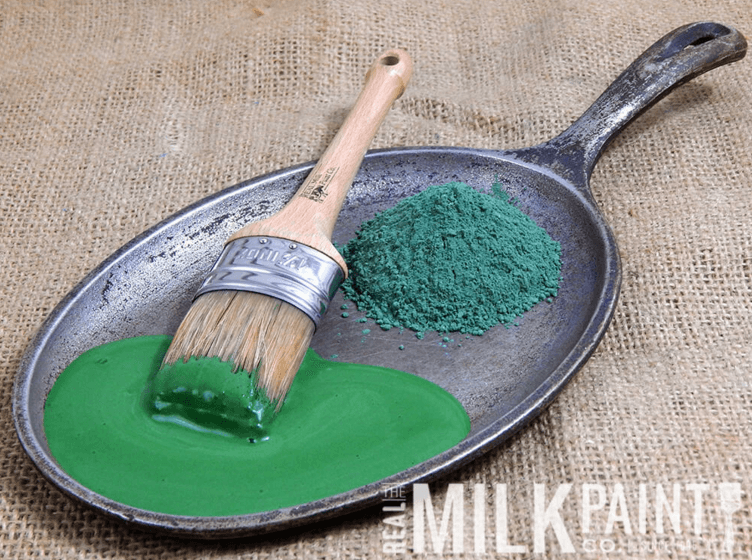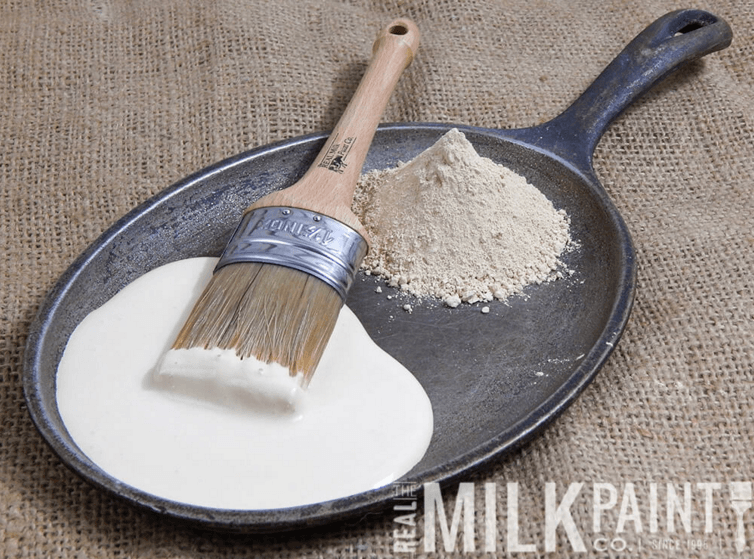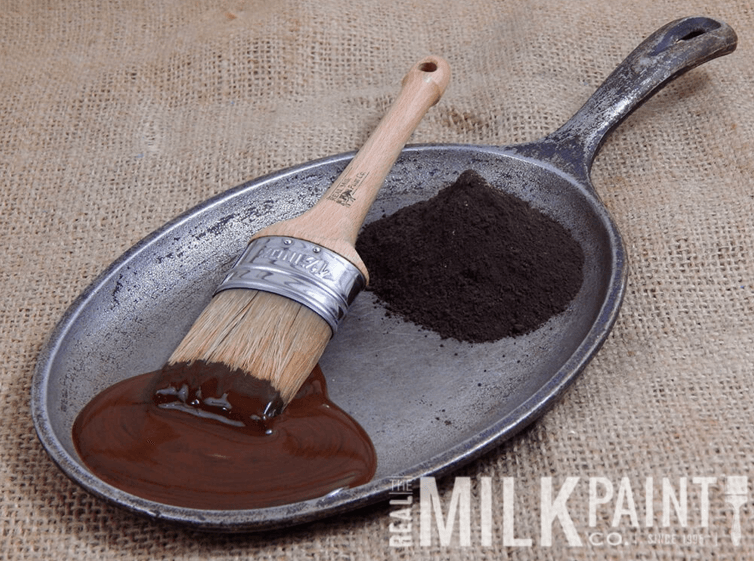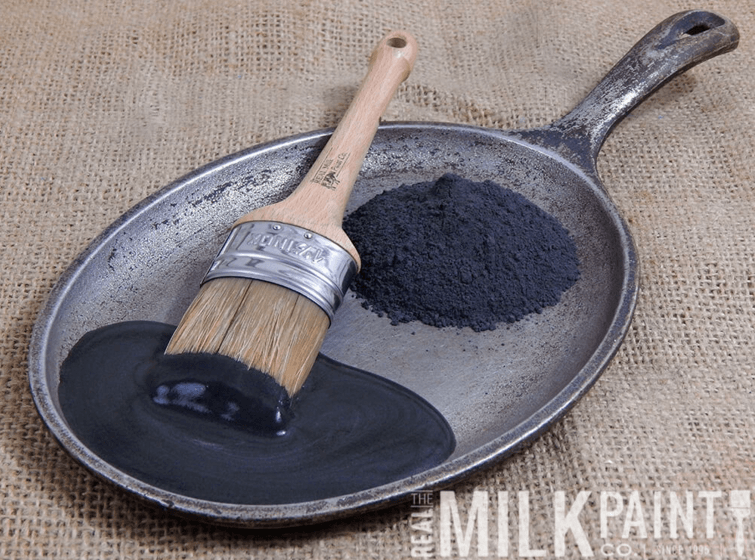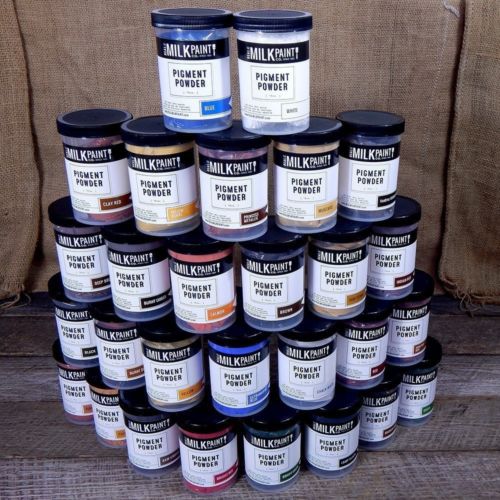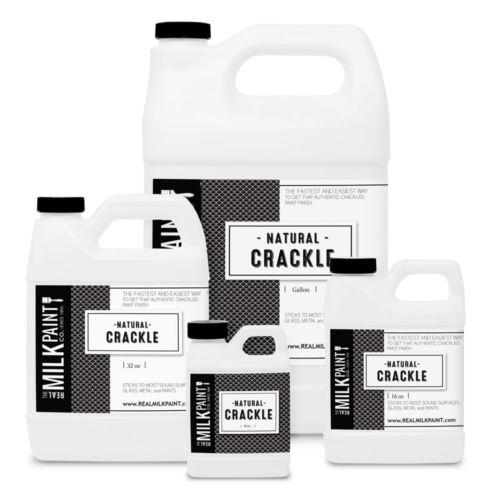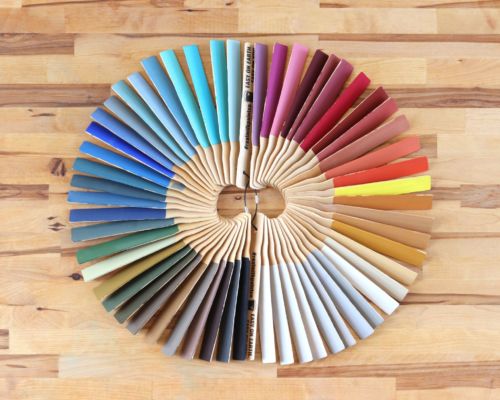Milk Paint
Environmentally friendly, non-toxic, powder paint! Just Add Water!
Featured on Home and Garden Television
Real Milk Paint will give you a matte, velvet, chalky paint surface. The lime wash look along with great coverage in a paint that sticks to a majority of surfaces without any priming or sanding. Colors and be intermixed to make your own unique colors. Can be thinned with more water for use as a wash coat or dye stain. Great for decorative looks on repurposed furniture or walls and ceiling. Reach for Real Milk Paint for the chalk paint look. Fun, easy and safe for you and the planet.
Real Milk Paint is a powdered paint that’s versatile and easy to use. It’s also environmentally friendly non toxic. Made from 100% organic material, milk paint is safe for the environment, and also protects you from harmful fumes. Our exclusive formula makes Milk Paint last longer than other products you might find for sale. After being mixed, our paint remains stable for at least two weeks, compared to a day, which is typical of most milk paints.
Product Description
Real Milk Paint is the ideal choice for an environmentally friendly, non toxic paint that gives you convenience and a broad color selection.
- Sticks to raw wood, plaster, dry wall, stone, unsealed brick and concrete
- Paint right on existing finishes for a Peele, Chippy or crackled surface
- No Primer need on raw wood and porous surfaces
- Sticks to latex with the addition of Ultra Bond
- Easy to use, water-based formula
- Each bag contains everything needed, just add water
- Remains usable for a minimum of two weeks after mixing with water
- Does not congeal to a blob
- Environmentally friendly
- Non-toxic
- Does not contain radioactive Kaolin Clays as a filler
- Traditional color palette, based on antique painted furniture
- Virtually no odor
- No residual odor after drying
- Dries fast (30 minutes to 4 hours depending on ambient temperature)
Get your free Real Milk Paint color chart.
Directions for Use
Each Quart contains a bag with 2-1/2 cups of powdered milk paint and a mixing marble. Take lid off can. Remove plastic bag with the powder. We recommend that you only mix a portion of the powder at one time in the can.
The powdered paint is mixed 1 part powder to 1 part water. So grab a scoop, around a cup will do. Scoop a cup of powder into the Quart can then a cup of water. Snap on the lid, shake for a few minutes, letting the mixing marble do the mixing. Pop the lids and your ready to paint, it’s that EASY!
- If too thick, add more water. If too thin add more powdered Real Milk Paint®. If excess foaming occurs, add a few drops of Anti-foam.
- Surface must be free of contamination, wax, grease, or oils. Clean with T.S.P. Sticks to other paints and finishes with the addition of Ultra Bond.
- When applying over other finishes, ALWAYS test for compatibility before full application
Covers: Sample covers 2 sq. ft. / Pint (16 oz) covers 35 sq. ft. / Quart (32 oz) covers 70 sq. ft. / Gallon covers 280 sq. ft.
Note: Real Milk Paint® will stick to oil base clear finishes and some painted surfaces but may cause a chippy , crackle or peel surface. If you want to get full adhesion then adding Ultra Bond is recommend. Please see “How to apply Real Milk Paint® to an Unknown surface” and “How to Paint Walls“.
Tips & Tricks
Painting Tips & Tricks
- For a brushy old world look use these natural bristle brushes for application.
- For a smoother more uniform painted look use these Foam Brushes.
- As days and weeks go by, the non toxic paint will continue to become more resistant to moisture.
- After it has dried 3-4 hours you may top coat with varnish, oil finish, Pure Tung Oil, lacquer, or wax.
- Try in inconspicuous area first, the color may change.
- Wear proper safety equipment, goggles and rubber gloves.
Spraying Tips & Tricks
- To spray, milk paint must be mixed in a blender to a smooth consistency and then strained.
- A 2.0 orifice or higher for the spray gun is recommended.
CAUTION: Contains calcium hydroxide (lime) may burn eyes and skin. Flush and rinse with warm water immediately.
Customer Testimonials
“This environmentally friendly paint keeps much longer than any other that I have ever used. This includes storage with both the mixed and unmixed product. It also builds better than any other product I have ever tried. They have an enormous selection of colors and the quality control is excellent. Dwayne is always most helpful when I have questions and is a terrific source of knowledge…”
Material Data Safety Sheet
126 Commerce Dr
Hohenwald TN 38462
Phone: 215-538-3886
Fax: 215-538-3886
24 Hour Emergency Phone: Chem-Tel Inc. 800-255-3924
Emergency Telephone Numbers:
24 hrs. Chem-Tel 800-255-3924 (within continental US)
24 hrs. 813-248-0585 (collect) (outside continental US)
Date Prepared: January 8, 2001
Updated: June 2015
Please Note:
The usual small quantities for individual use do not present any hazards unless ingested. This milk protein based mixture is supplied in powdered form, and to be used according to labeled directions. To contain spills, sweep up or vacuum. Avoid dust. Dispose of waste in accordance of Federal, State or Local regulations.
In case of ingestion:
– Give two 12 oz. glasses of water diluted with vinegar or fruit juice. – Consult a physician.
– Never give anything by mouth to an unconscious person.
Component Information:
COMPONENT CAS# OSHA (PEL) ACGIH (TLV)
Casein 0 00
Hydrated Lime 1305-78-8 N/A 2 mg/m3
Proprietary Natural Filler (derived from plant life)
Does not contain Radioactive Kaolin Clay Filler
Iron Oxides:
Red 1309-37-1 10mg/m3 5mg/m3
Black 1309-38-2 6mg/m3 10mg/m3
Yellow 51274-00-1 10mg/m3 5mg/m3
Ultra Marine Blue 101357-30-6 NE 5mg/m3
Titanium Dioxide 1317-80-2 15mg/m3 10mg/m3
Green Chrome III 1308-38-9 5mg/m3 5mg/m3
Orange 7023-61-2 15mg/m3 5mg/m3
Brown 52357-70-7 10mg/m3 5mg/m3
Sienna 1317-63-1 15mg/m3 5mg/m3
Crystalline Silica 14808-60-7 0.1 mg/m3 0.1mg/m3
Respirable
Emergency Response Information: First Aid Procedures
Inhalation:
– Move subject to fresh air and get medical help for breathing difficulties.
Eye contact:
– Flush eyes with large amounts of water for at least 15 minutes.
– Consult a physician if irritation persists.
Skin Contact:
– Wash affected skin areas thoroughly with soap and water.
– Consult a physician if irritation persists.
Ingestion:
– If swallowed, give two 12oz. glasses of water diluted with vinegar, or fruit juice.
– Consult a physician.
– Never give anything by mouth to an unconscious person.
Fire Fighting Information:
Unusual Hazards:
– None.
Extinguishing Agents:
– Use extinguishing media appropriate for surrounding fire.
Personal Protective Equipment:
– Wear self-contained breathing apparatus (pressure-demand MSHA/NIOSH approved or equivalent).
– Use full protective gear.
Hazard Information: Health Effects from Overexposure
Primary Routes of Exposure:
– Inhalation
– Skin Contact
– Ingestion
Inhalation:
Prolonged and continuous inhalation of dust of any kind can cause the following:
– Irritation of the respiratory tract
– Bronchitis
– Progressive Pulmonary Fibrosis (Silicosis)
Skin Contact:
Prolonged or repeated skin contact can cause the following:
– Contact Dermatitis
– Irritation to moist tissues
– Mucous with skin corrosion
Eye Contact:
– Eye irritation, intense watering of the eyes and possible lesions.
– May aggravate existing eye conditions when exposed for a prolonged period of time.
Spill or Leak Handling Information:
Personal Protection:
– Appropriate protective equipment must be worn when handling a large spill or this material. Respiratory protection NIOSHA/MSHA approved Dust and Mist Respirator. If exposed to excessive material during clean up; see the FIRST AID PROCEDURES for action to follow.
Procedures:
– Contain spill and sweep up or vacuum. Do not generate dust. Use an industrial vacuum for large spills. Dispose of waste in accordance with Federal, State and Local regulations.
Accident Exposure Information: Personal Protection Measures:
Respiratory Protection:
– Use a NIOSH/MSHA approved dust and mist respirator (such as 3M #8710).
– A respiratory protection program meeting OSHA 1910.134 and ANSI Z88.2 requirements must be followed whenever workplace conditions warrant a respirator’s use. None required if airborne concentrations are maintained below the TWA/TLV’s listed in the COMPONENT EXPOSURE INFORMATION section.
Eye Protection:
– Use splash goggles (ANSI Z87.1 or approved equivalent). Goggles recommended as liquid or powder can sting and irritate eyes.
Hand Protection:
– When handling large quantities the use of rubber or plastic gloves is suggested.
Other Protective Clothing or Equipment:
– Full length pants, long sleeve shirt.
Work/Hygienic Practices:
– Wash hands and face with soap and water. Wash and vacuum clothes and work area regularly. If exposed to large amount daily, use Vaseline to protect exposed skin, such as the neck, face and wrists.
Reactivity Information:
Instability:
– This material is considered stable. However, avoid open containers and damp conditions, as this may make the product unusable.
Hazardous Decomposition Products:
– None.
Hazardous Polymerization:
– Product will not undergo polymerization.
Incompatibility:
– Materials to avoid: Ethanol and strong acids.
Fire and Explosive Properties:
Flash Point Noncombustible
Auto-ignition Temperature Not Applicable
Lower Explosive Limit Not Applicable
Upper Explosive Limit Not Applicable
Regulatory Information:
Work Place Classifications:
– This product is considered non-hazardous under the OSHA Hazard Communication Standard (29CFR 1910.1200).
– This product is not a ‘controlled product’ under the Canadian Workplace Hazardous Materials Information System (WHMIS).
– Crystalline Silica (14808-60-7) is present in extremely small, but detectable, amounts. Known to the State of California to cause cancer by inhalation or ingestion.
Facility Control Measures:
Ventilation:
– Use local exhaust ventilation when handling large quantities. General mechanical ventilation is usually adequate with small quantities.
Handling Procedures:
– Use protective equipment, goggles and dust mask, if generating dust by sanding dry film.
Storage and Handling Information:
– Store in tightly closed containers in a dry, well-ventilated area, away from acids and ethanol.
Waste Disposal:
Procedure:
– Waste materials can be buried in an approved landfill in accordance with State, Federal and Local regulations.
Transportation Classifications:
US DOT Hazard Class……NONREGULATED
The information contained herein relates only to specific materials identified. The Real Milk Paint ® Company believes that such information is accurate and reliable as of the date of this material safety data sheet, but no representation, guarantee or warranty, express or implied, is made as to the accuracy, reliability, or completeness of the information. The Real Milk Paint ® Company urges persons receiving this information and DIRECTIONS as guidelines, and to make their own determination as to the information’s suitability and completeness for their particular application.
